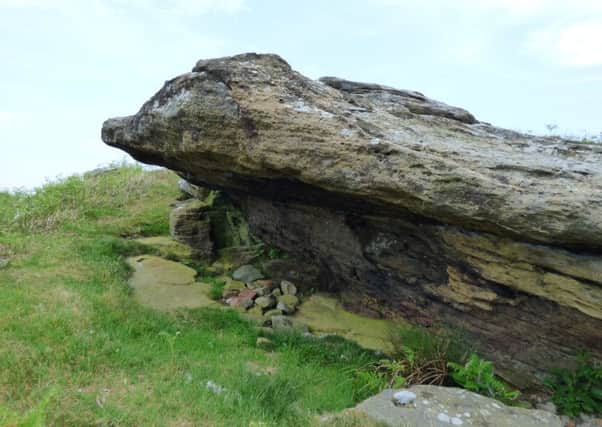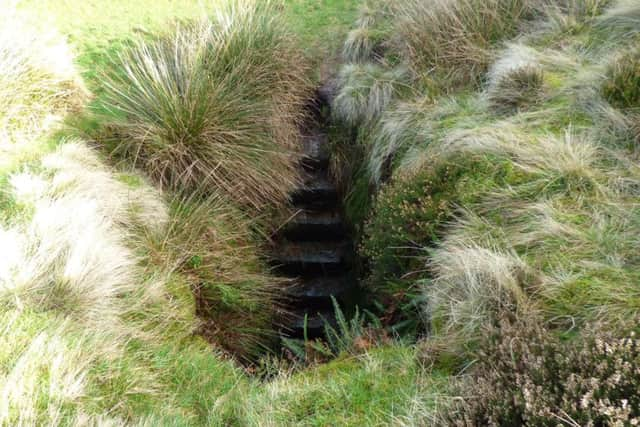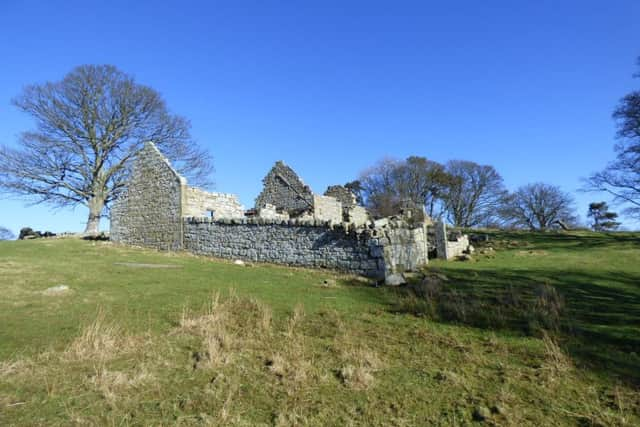Hangover has 8,000 years of history '¦


Little known and infrequently visited, its story spans 8,000 years of our history.
The chance find of some pottery remains in the 1980s led to a formal excavation, which revealed fragments of flint, dropped by the earliest inhabitants of Northumberland who used this overhang as a shelter.


Advertisement
Hide AdAdvertisement
Hide AdThese hunter gatherers of the Mesolithic age started to arrive about 8,000 years ago, following the end of the last Ice Age.
Much later, in about 2000 BC, this same spot must have been held in some reverence as the cremated remains of a loved one were interred here in a pottery vessel.
Was it the view towards the distinctive outline of Simonside, thought to be a sacred mountain, that made this place special to these people of the Bronze Age?
The discovery of more modern artefacts, such as broken clay pipes, showed that the shelter was being used by miners who were digging for coal in the numerous bell pits in the area.


Advertisement
Hide AdAdvertisement
Hide AdThis is just one of the many hidden historic sites that can be found in Northumberland that can provide an antidote to those more popular and crowded places which our heritage industry encourages us to visit, such as the county’s abbeys, castles and stately homes.
It is a similar situation with our landscape.
Our tourist publications are dominated by the same series of images – Bamburgh Castle and beach, Lindisfarne, and so on.
But there are so many more places to visit – by car, bicycle or on foot – which, while possibly lacking the grandeur of the more famous neighbours, still have the power to capture the imagination.


One of my favourites is Blawearie, on the moors above Old Bewick.
Advertisement
Hide AdAdvertisement
Hide AdA ruined house sitting in isolation, it has an atmosphere which is hard to describe. Now roofless and abandoned, the mature trees and adjacent rock garden show that this was once a family home.
The walk uphill from Old Bewick is one for strong shoes, but well worth it, and the views across to the Cheviots give a great excuse to rest awhile as you climb the trackway.
Just a few miles to the north is the mysterious Cateran Hole – a series of steps leading down to an underground chamber, clearly man-made, but why, and by whom?


There are legends of tunnels to the Hen Hole on the side of The Cheviot, but the place remains an enigma.
Advertisement
Hide AdAdvertisement
Hide AdIt was with ideas such as these in mind that I launched a small journal. The Cheviot is to be published three times each year. Part of its aim is to seek out places where, unencumbered by admission fees, crowds and interpretation panels, you are free to use your imagination to feel the atmosphere of place in a personal way.
Subtitled A North Northumberland Miscellany, it touches on many aspects of our region which are less well known – not just history, but our landscape, nature and arts too.
The second edition covers a broad range of subjects. Historian Jane Bowen writes about horse racing at Belford, while Claire Hedley explores the seashore in a Marine Safari. There is also a ‘behind the scenes’ look at the Otterburn Ranges.
Costing £4.50, which includes postage in the UK, it can be bought from www.wildsofwanney.co.uk or by cheque to Wanney Books, 15 Fairfields, Alnwick, NE66 1BT.
Advertisement
Hide AdAdvertisement
Hide Adl Ian Hall has lived in Northumberland for more than 30 years. Retiring in 2010 after a career in engineering, he now writes and publishes local history books. His column, Off the Beaten Track, will explore aspects of our region that are a little less well known.
l Ian Hall has lived in Northumberland for more than 30 years. Retiring in 2010 after a career in engineering, he now writes and publishes local history books. His column, Off the Beaten Track, will explore aspects of our region that are a little less well known.